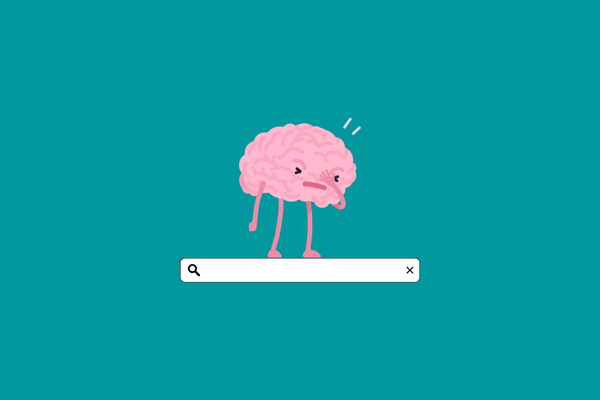Everything about Motivation: Definition, guide, and quotes
Motivation is the general willingness to do something. With this "general willingness," many people have problems from time to time and from activity to activity.

I am no different.
I have one or two tasks that I have been gritting my teeth on for a long time, even though I used to do them without any special prompting.
As these tasks are closely linked to my goals, I have started to try different tactics to regain my motivation.
There is a popular misconception about motivation that it comes from passively watching motivational movies and videos, reading inspirational books, binge-reading some uplifting quotes.
These instant motivational cocktails work in the short term, but after a while, they are completely useless. I had to look for another method, so I dug deep into the research on motivation and searched for scientifically proven tips.
A little research hasn't made me an expert on the subject and I'm nowhere near claiming that I now do every mundane activity with bursts of motivation. But I did understand why I had problems motivating myself and how I could change it.
If you stick with me to the end, you'll be enriched with research-proven models and practical tips that you can apply to your own situation, instead of the "you can do it" and "yesterday was an easy day" depth of motivation tips.
What is Motivation?
Motivation 1.0 - Survival
Motivation 3.0, one of Daniel H. Pink's most practical books, divides motivation into three levels. Once we earn the rewards offered by each level, we need more to sustain our motivation. We move to the next level until we reach the pinnacle of motivation, Motivation 3.0.
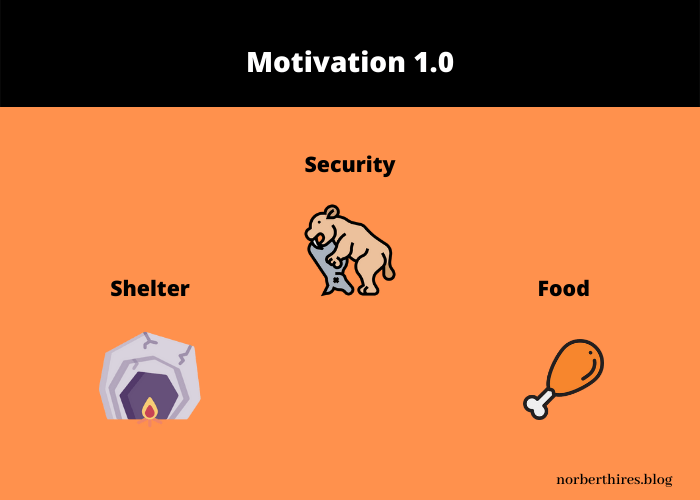
Pink's system translates the lessons of Maslow's pyramid into the field of motivation theory.
"Motivation 1.0 was the intrinsic motivation that gave me the impetus to hunt and escape from the saber-toothed tiger. Until it didn't." - Daniel H. Pink
Survival is motivation 1.0.
Shelter, food, and security.
Some people think it is total bullshit to talk about motivation and they are right. For those who scrape by for a day's food or whose housing depends on their performance, Motivation 1.0 is the driving force.
Self-fulfillment, work that suits their interests, work-life balance are just some luxury words for them.
You have a roof over your head and bread on your table.
What else do you want?
While it is a valid question, once the basics for survival are in place, we soon look for other sources of motivation. And shaming those in a worse position is unlikely to increase motivation.
The first level of motivation has been surpassed by mankind for hundreds of years. The industrial revolution and continuous progress have made it possible to increase living standards and secure housing.
Workers on newly assembled production lines needed to be motivated by some new means beyond survival.
Motivation 2.0 - Reward and punishment
People are more than their biological needs. Primary drivers still matter, but they don't quite control who we are. We have a second driving force: seek reward and avoid punishment.
This new operating system is Motivation 2.0.
For routine tasks that don't require creativity, reward and punishment are effective motivational tools. On the production line, this new source of motivation was exactly what was needed to increase efficiency and keep production running at maximum levels.
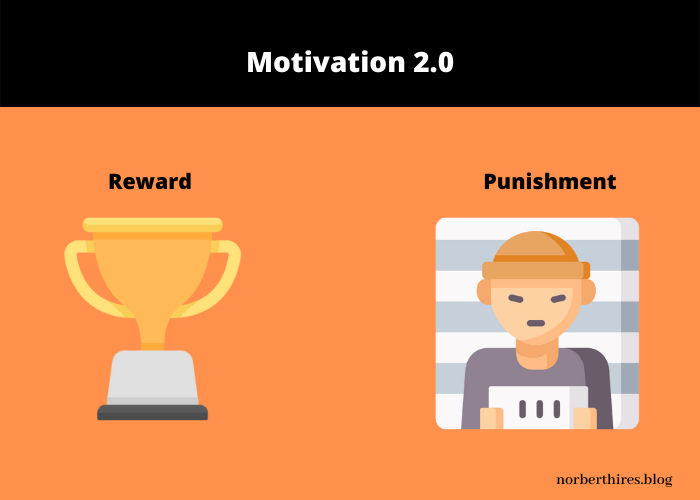
The problem with Motivation 2.0 is that we are no longer the expendable workers of the 17th-century assembly lines. The changes did not end with the industrial revolution. Advances in computing, robotization and increasingly sophisticated software are no longer just replacing production line workers with routine white-collar jobs.
Based on Daniel H. Pink's argument, when we replaced blue collar with white, we were still often doing routine tasks. That's why we were able to reduce the work in accounting, law, computer science and so many other areas with scripts, formulas, or checklists.
But today, much of the routine white-collar work seems to be disappearing in North America, Western Europe, Japan, and South Korea. A race is on to, outsource it to the cheapest places.
In India, Bulgaria, the Philippines, and other countries, low-paid workers are basically running algorithms, finding the right answer and sending it to someone six thousand miles away.
Long lives and increasingly insecure jobs mean that many of us need to think about what our true talents are, what we can contribute and how we can develop our own skills.
To do this, intrinsic motivation is essential.
If we try to use external motivational tools for complex tasks that require creativity, we have to be aware of their hidden costs.
Several studies have shown that rewards and punishments hurt intrinsic motivation.
Try to get a child to learn maths by paying him or her for every problem solved. He will certainly do better in the short term, but in the long term, he will lose interest in maths.
People want to motivate others by giving rewards, but in doing so they unknowingly undermine the person's intrinsic motivation to act.
Motivation 3.0 - Intrinsic motivation
Motivation 3.0 is based on the observation that routine, uninteresting tasks require guidance, while more complex, interesting tasks require self-direction.
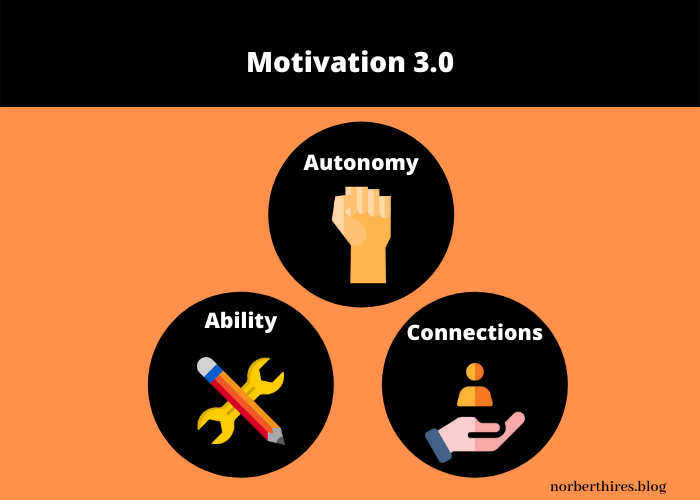
Open-source projects
Pink uses the world's largest digital encyclopedia and its contemporary competitor as an example of intrinsic motivation. In 1993, Microsoft began working on Microsoft Encarta, intended to be the world's best digital encyclopedia, without sparing company resources.
Microsoft sold its Encyclopaedia in CD form with varying degrees of success, when a self-organizing competitor, Wikipedia, appeared in 2001.
Wikipedia is an open-source project, so the authors of the articles, the editors, and the contributors are not paid for their work. Everything depends on internal motivation. Wikipedia made Encarta obsolete in eight years, and it was shut down by Microsoft in 2009. Contributors to Wikipedia (and all open-source projects) give their time to the project for a greater purpose than for reward.
Their work is intrinsically motivated, they do not need guidance and their commitment is not negatively affected by rewards and punishments.
Open-source projects show that a job that is not interesting in itself but serves a larger purpose can be meaningful and therefore motivating.
Goals and numbers
“Goals that people set for themselves and that are devoted to attaining mastery are usually healthy. But goals imposed by others--sales targets, quarterly returns, standardized test scores, and so on--can sometimes have dangerous side effects." - Daniel H. Pink
The problem with making a number the only thing that matters is that people will find the shortest path to achieving it. Environment, morality, human lives are subordinated to corporate targets.
And the wrong metrics are downright demotivating. Measuring work in terms of time, for example, harms non-routine tasks where the link between how much time someone spends on a task and the results they produce are unrelated.
But what is a good goal?
Individually, it is worth setting both performance and learning-based goals.
Getting an A in French, for example, is a performance-based goal. To become fluent is a learning-based goal. Both goals are normal and widely used.
According to Carol Dweck, the originator of the growth mindset concept, both can help performance, but only one leads to excellence.
What fuels intrinsic motivation?
While survival and rewards tend to satisfy our biological needs, intrinsic motivation is fuelled by our psychological needs.
Three things are particularly important for maintaining intrinsic motivation:
- Autonomy: To maintain intrinsic motivation, we need to have direct control over outcomes and freedom over how we do our work. It is difficult to stay motivated in a controlled environment.
- Ability: It is worth working on problems that test your abilities but do not present impossible challenges.
- Personal connection: it is important to identify the purpose of the activity. It is useless to be given free rein to do a task of sufficient difficulty if we find it pointless or immoral.
When these three needs are met, we are motivated, effective and happy. When any one of them is compromised, so are our motivation, efficiency, and happiness.
How to stay motivated?
Now that we've looked at the factors that most often influence intrinsic motivation - autonomy, ability, and personal connection - it's worth looking at how we can make the most of the different psychological needs.
1. Autonomy
There is no one-size-fits-all framework for increasing our autonomy, as it is different for every activity and unique for everyone.
I don't want to get too clever about autonomy.
You know what level of freedom you need to perform a task. If you don't like working on detailed instructions, then look for an opportunity where you have more freedom.
2. Proper ability
According to the Goldilocks rule, our intrinsic motivation peaks when we are working on problems that push the limits of our current abilities.
A football game against a kindergarten team is unlikely to excite you, just as the tenth goal from an Italian A-League team is unlikely to be seen as an opportunity to improve.
The task chosen should be neither too difficult nor too easy.
It should be exactly the limit of your existing abilities. This is also important because it is in this state that you have the best chance of a flow experience.
Flow experience
Flow is a mental state that you experience when you are so focused on an activity and the world around you fades away. Flow is a deep sense of engagement, which is the inspiration for Motivation 3.0.
According to Mihály Csíkszentmihályi's research, flow is not just a pleasant by-product, it is a necessity. In his experiments, when he asked participants to carefully track which activities put them in flow and then consciously leave them, subjects complained of feeling unwell and even headaches during the flow-free period.
Flow is necessary for our survival. It's like oxygen.
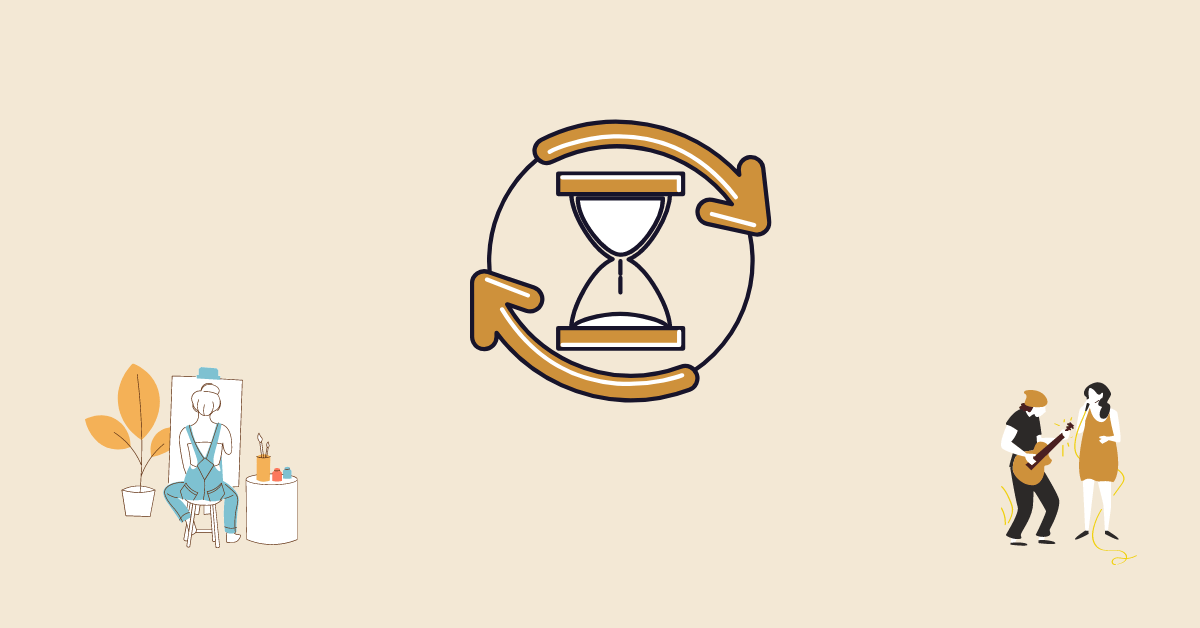
Conscious practice
If we want to maintain our intrinsic motivation, the Goldilocks rule says that progress must become an integral part of our lives. Of course, this is much simpler in writing than in practice.
If we want to keep raising that imaginary bar, after a while regular practice, mere participation, will not help us.
We need conscious practice.
Conscious practice is not running a few kilometers a day or practicing the piano for 20 minutes every morning. It is much more focused, conscious, and painful.
Conscious practice is when you sprint after your usual miles when you play the pieces on the piano that you don't know perfectly. Conscious practice is when Tiger Woods plays golf in the pouring rain instead of Friday night college parties because he rarely gets to practice on a wet field.
Habits
Even when we are motivated to improve, it is easy to procrastinate. The results of our really important goals will usually not be realized immediately but over a long period.
A book is not written in a single afternoon (hopefully), but many hours of research and writing will precede the final result, not to mention the time spent practicing.
Without long-term thinking, however, it is easy to replace activities that are necessary for our long-term goals with their companions that bring us temporary pleasure. To compensate for these gaps in our thinking, we should create systems that make it easier to take the necessary steps.
The work of top performers does not depend on motivation or inspiration. They develop routines that bring them closer to their goals.
James Clear, the author of Atomic Habits, published at least two new articles every week on his blog for two years before publishing his book. There were times when he didn't feel motivated, but he still wrote his weekly dose. His secret (like his book) is all about habits.
She didn't sit down to write immediately every day but tricked herself into a pre-game routine. Before each writing session, he drank a large glass of water to condition himself for the next step, writing.
The habit guru used the same method for fitness. Instead of going straight to the gym, he first put on his trainers. The next step was automatic.
3. Personal connection
Personal connection depends on our values and personality. Like autonomy, this is an elusive area, so instead of looking for hints, I looked for another model that could answer our questions.
Ikigai
The concept of Ikigai originates from the Okinawa Islands in the south of Japan, whose inhabitants often live to be well into their 100th year. Many people have been intrigued by this particularly long life, and have conducted a series of interviews and research to find out the secret of longevity.
Some believe that the Japanese secret to longevity is Ikigai.
Ikigai is nothing more than the thing that gets you up in the morning.
Your mission.
Your purpose in life.
You can find it by making a list of things you love, things the world needs, things you're good at, and things you get paid for. If you can fit something into each of these categories, it will be your Ikigai.
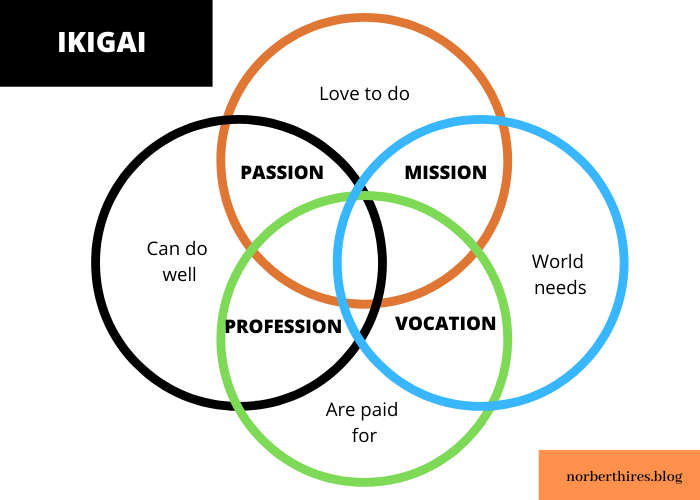
While not strictly about finding your connections, completing the Ikigai model can help you answer the big questions.
Motivation in a nutshell
Motivation is complex and changes with us.
Like Maslow's pyramid, survival is our greatest source of motivation, but in many cases, external motivation tools, rewards, and punishment can also be effective. However, to perform creative and complex tasks we need strong internal motivation. Today, much of the monotonous tasks are solved by automation or outsourcing, so self-direction is an almost indispensable skill.
Intrinsic motivation can be maintained by ensuring an appropriate level of autonomy, developing our skills, and choosing goals in line with our values.
We can develop our skills through difficult but not impossible challenges, habit formation, and conscious practice. And in discovering our values and our mission, Ikigai can help us.
In this article, I have not sought to give you some tips, but questions are the right way to find your motivation. This is the hard way, but the only way that works in the long run.
The problem is that your task here doesn't end with reading the article. Now comes the application of what you have read.



